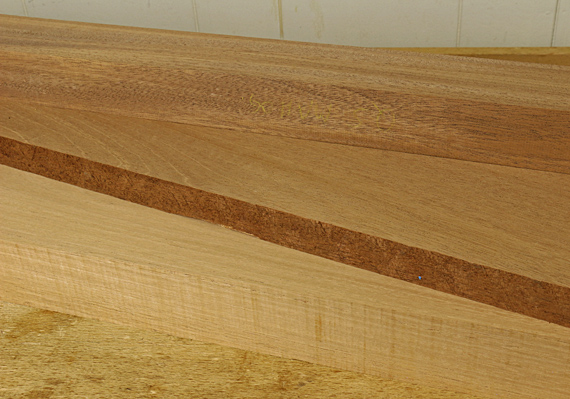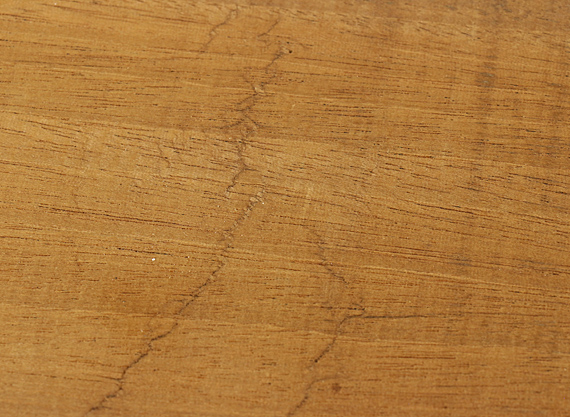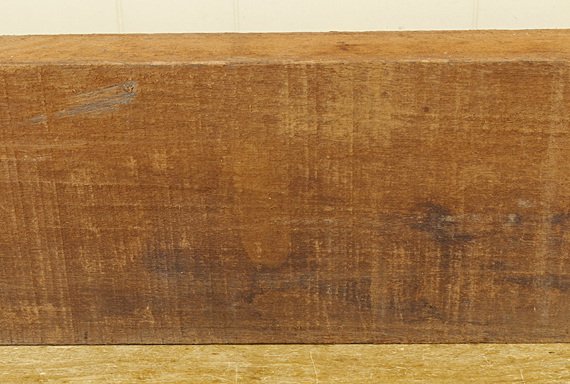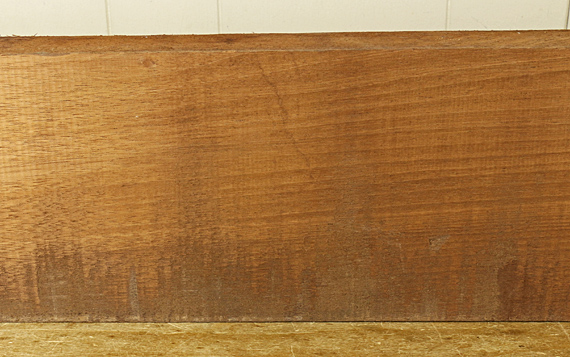
Fasten your seatbelt as we ride through the world of mahogany! Our tour will be mostly about woods that are similar to mahogany, and sometimes referred to as “substitutes” for it, but are better considered on their own merits.
We start our journey with “genuine mahogany,” aka Swietenia macrophylla, big-leaf mahogany, Honduran mahogany, Central/South American mahogany, or if you want to live and buy dangerously, just call it “mahogany.” Just the name sounds, you know, classy. People, including people who buy furniture (such as you might build) but know nothing about wood, are almost always impressed by “mahogany.”
Note that in the rear-view mirror is Swietenia mahogani, aka Cuban mahogany, the best of them all, once used for building ships and furniture, but long since essentially unavailable. You might find a bit of it for sale that was rescued from the occasional tree downed in a storm in south Florida, and there is a plantation operation on a South Pacific island. I once read that it works like “cold butter,” and having had a tiny piece of the stuff some years ago, I can confirm that description.
But back to S. macrophylla. When it’s good, it has a lot going for it. Boards with good density and color are a pleasure to use in your projects. It usually planes easily on the flatsawn surface, while the quartersawn surface often exhibits attractive “ribbon-stripe” figure due to interlocked grain. This is difficult to plane but quite manageable with scraping and sanding. The wood is soft enough to saw and chisel easily but firm enough to hold detail.
The stability of mahogany is legendary. Radial shrinkage is 2.9%, tangential 4.3%, yielding an excellent T/R of 1.5, and paltry volumetric shrinkage of 7.5%.
Then there’s the chatoyance – that wonderful shimmery gleam, lovely but not overpowering – that mahogany does so well. You know, classy. A shellac and wax finish looks great.
Unfortunately, big-leaf mahogany is a big pain in the neck. Why? First, because it is expensive. I cannot find even the drabbest mahogany for less than $10 per board foot. Yet it is extremely variable in quality. Some boards in the bin will have that nice density and color, while others are junk wood – light in color and density, or often with defects. In fact, I suggest avoid buying mahogany in the rough; look for S2S or hit-or-miss planed stock.
In the photo at top, all three boards are genuine mahogany. Yup, the real thing. The top one resembles sapele (more on that in an upcoming post), the middle board is what I consider nice flatsawn mahog, and the bottom one is genuinely trash wood, as far as I’m concerned.
The most notorious defects are compression failures, sometimes called “windshakes.” These are jagged cracks across the grain, usually through the full thickness but not the full width of the board. The fibers are broken, rendering that part of the wood useless. It occurs in the tree from severe wind forces, snow loads, or, what I suspect is mostly the case with mahogany, when the tree is felled. Beware: this defect is very difficult to notice in rough boards, where it lurks to disappoint you when you bring the wood home and plane it.

See the defect in the board below? No? Neither did I before I took it home.

Here is the other side of the board, with the compression failure clearly visible after I skimmed it on the jointer. The defect goes through the full thickness of the board.

S. macrophylla is listed in CITES Appendix II, and on the IUCN Red List as Vulnerable. We are probably encountering mostly plantation grown wood, and the quality is uneven at best.
And so, regrettably, mahogany is nearly off my list of good options for wood. Next, we’ll look at a common alternative, Khaya, aka African mahogany. There’s that word again.


Given the location where these trees grow, I am quite sure that snow load is not a factor for compression failures :-) I also suspect that this is a consequence of how they fell the tree. May be they don’t remove the branches before felling them and when the tree fall on a branch, this stresses the main trunk.
In the last year, I got my hand on 5 different batches of Sapele (which I skip plane before storing to allow me to see the grain and the defects before using it for a project) and I saw compression failures too in this specie. About 5-6 compression failures in about 1000-1200 PMP (which I always catched AFTER kip planing).
I always inspect carefully the boards for this kind of failure on this specie before using them since this kind of failure can be particularily dangerous to work with on a table saw or a jointer.
Yes, yes, Benoit, I know snow is not likely to fall on mahogany trees! That was a general statement regarding compression failures, noting the specific issue of felling the trees that is likely with mahogany.
Anyway, in upcoming posts, I’ll discuss Khaya, sapele, sipo (utile), etc.
I agree, it pays to inspect these boards (mahogany, Khaya, etc) carefully. The real problem is buying them in the rough. One tip-off is seeing a board of mahogany or Khaya with crook. It will probably also have compression failures.
Well, the snow-joke was just for fun :-)
My current supplier for Sapele is just selling it for big buyers, so it is only available on the rough. Additionnaly, I CAN’T chose my boards. So I have to do with what I get. That’s why my procedure is to skip plane it first (I “acclimate” it for about 3 weeks in my shop and monitor the RH) so I am able to chose my boards when a project come to be built.
The other option I have is to buy at another place that gets the Sapele from my current supplier: there I can chose my lumber but still it is not skip planed. But is far much pricey and my experience show me that I would not be able to choose significantly better than what I get randomly from the “big” supplier. Additionnaly, It seems that people getting before me at this place do select the best boards (probably because they go there more often than I do and they know when a new shipment has been received).
The constant I am seeing is that the best bet I can have is that the larger and longer a board is, chances are that this board will be of higher quality. I have a plank here of 8/4 that is 20″ wide and 15 foot long and it is near perfect.
I am delighted that you will be speaking about Sapele, because I have a bunch of projects to do with all the Sapele that I have in stock here!